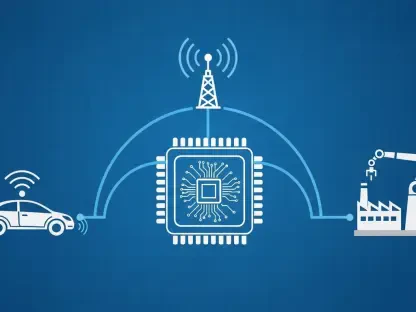In an era where seamless internet connectivity is no longer a luxury but a fundamental expectation, Internet Service Providers (ISPs) face mounting pressure to ensure robust Wi-Fi performance in homes and businesses alike. A staggering number of households report frequent connectivity issues, often leading to dissatisfaction and potential churn, which highlights a critical challenge for the industry. Enter Ookla, a company renowned for its digital tools like Speedtest, now stepping into the test and measurement arena with an innovative solution designed to transform how ISPs address these pain points. This new handheld diagnostic device, aimed at field technicians, promises to enhance Wi-Fi analysis during installations and service calls. By focusing on quality over sheer speed, it aligns with a broader shift in priorities among broadband providers. This development marks a significant moment for ISPs striving to meet evolving customer demands, setting the stage for a deeper exploration of how such tools can redefine service delivery and satisfaction.
Revolutionizing Wi-Fi Diagnostics for Field Technicians
A pivotal aspect of this new offering is its design tailored specifically for ISP field technicians who are on the front lines of installation and troubleshooting. The handheld device connects directly to a router via an Ethernet port, capturing detailed performance data that is then relayed to a companion smartphone app for in-depth analysis. This streamlined process allows technicians to quickly identify issues such as signal interference or coverage gaps, ensuring installations are completed correctly on the first attempt. Beyond mere diagnostics, the app generates comprehensive reports that pinpoint bottlenecks and suggest actionable solutions, empowering technicians to resolve problems efficiently. This capability not only saves time but also enhances the overall customer experience by minimizing repeat visits, a common frustration for many subscribers. As ISPs increasingly recognize the importance of reliable in-home connectivity, tools like this are becoming indispensable for maintaining a competitive edge in a crowded market.
Equally significant is the potential for this diagnostic tool to drive additional revenue for ISPs through strategic upselling opportunities. During service calls, technicians equipped with detailed performance insights can recommend advanced equipment like mesh systems or additional access points, particularly for larger properties where coverage is often inconsistent. This approach transforms routine maintenance into a chance to enhance network quality while meeting specific customer needs. The focus on achieving a flawless first-time installation further reduces operational costs associated with follow-up visits, creating a win-win scenario for providers and subscribers alike. By integrating such technology into their workflows, ISPs can position themselves as proactive partners in connectivity, addressing issues before they escalate into major grievances. This shift underscores a growing trend where technical solutions are paired with business strategies to optimize both service delivery and profitability in the broadband sector.
Addressing Industry Trends and Customer Expectations
The introduction of this diagnostic tool comes at a time when the industry is witnessing a notable pivot from prioritizing broadband speed to emphasizing Wi-Fi quality as a key determinant of customer satisfaction. Recent surveys reveal that a significant percentage of households encounter Wi-Fi disruptions annually, with many requiring professional intervention to resolve persistent issues. Even more telling is the readiness of over half of these customers to switch providers if problems remain unaddressed, illustrating the direct correlation between network reliability and loyalty. ISPs are responding by investing in premium managed Wi-Fi services, often complemented by user-friendly apps that allow subscribers to monitor and optimize their networks. This new device fits seamlessly into this landscape, equipping providers with the means to validate installations and troubleshoot effectively, thereby meeting heightened expectations for seamless connectivity in an increasingly digital world.
Beyond immediate diagnostics, the broader implications of this technology reflect a strategic alignment with ISP efforts to enhance end-user experiences through robust connectivity solutions. The emphasis on managed Wi-Fi platforms, alongside tools for technicians, signals a comprehensive approach to tackling in-home network challenges. Poor Wi-Fi performance can significantly undermine customer perceptions, often overshadowing other service aspects like speed or pricing. By providing actionable data and recommendations, this tool enables ISPs to address issues promptly, fostering trust and reducing churn. Furthermore, ongoing pilots with major broadband operators suggest early confidence in its real-world applicability, paving the way for wider adoption. As the industry continues to evolve, such innovations highlight the necessity of balancing technological advancements with a deep understanding of customer pain points, ensuring that connectivity remains both reliable and responsive to modern demands.
Future Innovations and Business Strategies
From a business perspective, the rollout of this diagnostic solution introduces a dual revenue model that includes an upfront cost for the hardware and a recurring fee for the associated software and analytics services. While specific pricing details remain under wraps, this structure indicates a focus on long-term partnerships with ISPs, starting with major operators before potentially expanding through channel partners. The initial testing phase with select providers showcases a commitment to refining the tool based on real-world feedback, ensuring it meets diverse operational needs. Looking ahead, plans to introduce a feature for continuous monitoring by next year promise to further enhance its value by detecting intermittent issues and supporting service level agreements. This forward-thinking approach positions the device as not just a reactive tool but a proactive asset for maintaining network integrity over time.
Another layer of innovation lies in how this tool complements existing offerings within Ookla’s portfolio, distinguishing itself as a practical solution for routine field tasks. Unlike more complex hardware designed for large-scale installations, this device prioritizes accessibility and ease of use for everyday service calls. Currently, there are no intentions to embed its capabilities directly into Wi-Fi routers or gateways, maintaining its role as a standalone offering for technicians. This strategic focus ensures that ISPs can integrate the technology without overhauling existing infrastructure, streamlining adoption. The broader industry shift toward optimizing end-user experiences through better Wi-Fi performance is evident in such developments, as providers seek to address connectivity challenges head-on. As competition intensifies in the test and measurement market, this tool marks a significant step for Ookla in establishing a foothold among established players, with future enhancements likely to further solidify its relevance.
Reflecting on a Strategic Leap Forward
Looking back, the launch of this diagnostic device by Ookla represented a calculated response to the pressing need for improved Wi-Fi performance among ISPs. It tackled a critical pain point by equipping field technicians with advanced capabilities to ensure installations were done right the first time and issues were resolved swiftly. The alignment with industry trends toward quality-focused broadband services was evident, as was the potential for upselling advanced equipment to enhance coverage. For ISPs, the next steps involved integrating such tools into broader service strategies, leveraging detailed analytics to anticipate customer needs and prevent disruptions. Exploring partnerships and expanding pilot programs offered a pathway to refine and scale this technology, while anticipating features like continuous monitoring hinted at even greater possibilities for proactive maintenance. Ultimately, this development underscored a pivotal moment for the industry, emphasizing actionable solutions to sustain customer trust in an ever-evolving connectivity landscape.









